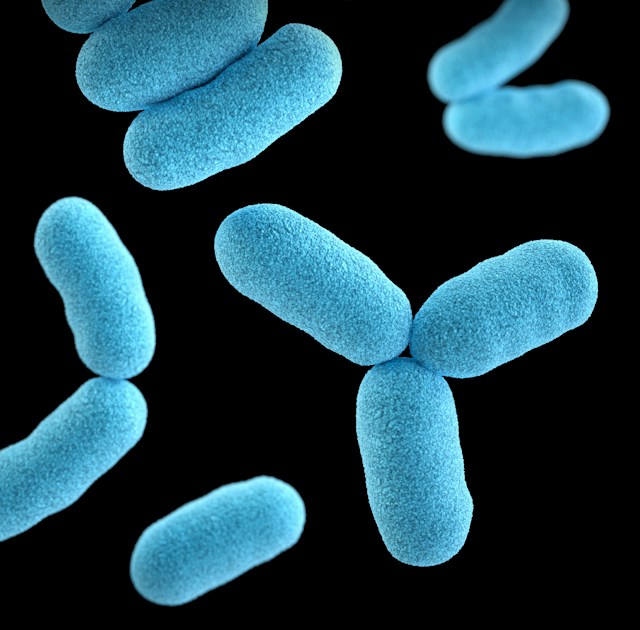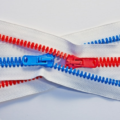An exciting new paper was published recently which should turn the oxalate world upside down. The authors hunted public databases and compiled a list of microbes that possess variations of a gene called oxalyl CoA decarboxylase. That gene makes a protein that degrades oxalate.
Oxalate is an ion used by microbes for communication between fungus and bacteria, but it is found at varying levels in plant food. Our bodies also manufacture oxalate during a stress response. Everybody makes some amount of oxalate in their bodies and eats sometimes huge amounts of oxalate in foods like spinach, beets, nuts and seeds, and also (alas!) chocolate. When oxalate in our bodies gets too high, it causes dysbiosis and becomes dangerous, tangling with mineral metabolism, and delivering harsh changes to mitochondrial function, adding in distressing levels of oxidative stress.
Humans lack any oxalate-degrading gene in our own genome. That means we cannot degrade oxalate using our own talents. Instead, we are reliant upon our microbes in the gut to degrade oxalate. From studying isolated human beings who have never seen an antibiotic, scientists have realized that like them, our ancestors had plenty of oxalate degrading microbes in the gut (termed oxalotrophic microbes). The job of these microbes was to keep oxalate from food from getting into the inside of their bodies. That system worked well even when the diet was high in oxalate, but things changed when our microbiome began to be damaged by antibiotics and antifungals, and other hits.
In this discussion, I would like to examine findings from this recently published study from China: Abundance, Functional, and Evolutionary Analysis of Oxalyl-Coenzyme A Decarboxylase in Human Microbiota where they identified the microbial species that possess one of the two genes that we know are used to degrade oxalate in our intestines. We will also examine some other issues that this new knowledge unwraps.
Oxalate Degradation Is Dependent upon Thiamine and Is Impaired by Antibiotics
The protein oxalyl coenzyme A decarboxylase is dependent upon thiamine. It requires thiamine that is in other forms to be converted into thiamine diphosphate (TPP). Scientists have told us that this is the primary form of thiamine that microbes will make and use.
Some of us have inborn errors in our thiamine chemistry. Those errors might limit our delivery of thiamine to the inside of our gut so that our oxalate degrading microbes can use it. Another issue is that some antibiotics kill bacteria by attacking those microbes with a direct hit to their thiamine chemistry.
I had my own tangle with these issues very many years ago. Back in 1967, I was given two rounds of chloramphenicol, an antibiotic that attacks the thiamine chemistry in bacteria. In March of the following year, four months after I stopped taking the antibiotic, I developed bone marrow failure and almost died. The same blood disease, called aplastic anemia, has been found on occasion in primary hyperoxaluria, which is a genetic disease where the body makes fatal levels of oxalate coming mostly from producing oxalate in the liver.
Chloramphenicol was taken off the market in the US in 1968 because so many people died from blood problems that came on slowly like mine. Another antibiotic that attacks thiamine chemistry is Alinia and it is used broadly by functional medicine doctors. There may be even more antibiotics that would also cause this problem, but no one has done a systematic review of vitamin deficiencies caused by antibiotics. If someone would do this type of analysis of all licensed antibiotics, then doctors would have a list of antibiotics to avoid if their patients had a genetic weakness or a deficiency in thiamine or other vitamins. Also, some viral infections may purposefully impair thiamine chemistry to weaken the host. Polio is an example. That is why after certain infections, someone may actually develop a new oxalate problem.
Oxalate Degrading Species May Not Be Pathogenic
In the paper mentioned above, the researchers found 1739 Oxalate degrading species in humans. All of the different species they identified were equipped with oxalyl-Coenzyme A decarboxylase that allows microbes like oxalobacter formigenes to degrade oxalate. You may be surprised to learn that you have probably never heard of most of these species. Because I was curious about their identity, I looked for how many oxalate degrading bacteria show up on the GI Microbial Assay Plus (GI-MAP) test from Diagnostic Solutions Laboratory, or were found on the comprehensive-digestive-stool-analysis-(CDSA) from Genova Diagnostics. These are tests frequently ordered by functional medicine doctors or naturopaths. I have noticed how often these tests are ordered when a patient has some sort of GI distress because I routinely review that sort of lab work during consults and find out from the patient what his doctor prescribed after seeing the results of the test. Most often, the patient was given antibiotics. Of course, which antibiotic the doctor chose varied significantly.
Included in the list of bacteria that degrade oxalates, were many species that are believed to be pathogens because they were elevated on tests that were ordered at a time of increased symptoms. It is natural to assume these microbes were the primary cause of the symptoms, however, I cannot help but wonder if the relationship between these bacteria is what we thought it was. If oxalate is a communication method between microbes, how many of those symptoms could have been caused by the elevated oxalate or the effect of that oxalate on intestinal microbes? If oxalate is a favored food for these types of microbes, might they expand their population whenever oxalate is increased? This might be similar to how ants or flies may show up in numbers when you uncover food at a picnic. Flagging the increased count of these species on lab tests might have persuaded the doctors to treat with antibiotics, and there was no other game plan. Would reducing oxalate have helped solve the problem without antibiotics?
Oxalobacter Formigenes: An Oxalate Obligate
Within the oxalate field, a great deal of attention has been given to the microbe oxalobacter formigenes. The man who discovered this microbe, Dr. Milt Allison, had a lot to do with inspiring me to start looking more carefully at oxalate in autism and other conditions, and that grew to include pain conditions, autoimmunity, and gastrointestinal distress.
The uniqueness of oxalobacter formigenes, as far as we know, has been that it is the only microbe that requires oxalate to survive. Its dependency on oxalate is why scientists call it an oxalate obligate. This trait is why this microbe has received the most attention from scientists and became the launching point of this Chinese paper.
In a different study that I have reviewed before in the TLO Research Corner on the Trying Low Oxalates Facebook group, scientists looked at the differences in the diversity of microbes that survive in a very high oxalate condition (which in this case was chronic kidney stones) and compared that to normal controls. These scientists found out that oxalobacter doesn’t tolerate a high oxalate environment very well. Please note that their title implies that oxalate causes dysbiosis and not the reverse.
In the last two decades, a company called Oxthera and its predecessor have spent millions of dollars trying to develop oxalobacter as a drug for primary hyperoxaluria. Sadly, they still have no product on the market. Oxalobacter formigenes may have been the wrong microbe to pursue because the paper on dysbiosis found that this microbe really doesn’t like extremely elevated oxalate. This may be like humans having a hard time eating a hundred hamburgers in one sitting. This Chinese paper shows that scientists now have many more choices of oxalate-degrading microbes to study for research.
What Might Cystic Fibrosis Teach Us About Oxalates?
I have talked to our TLO group about this before, but cystic fibrosis is a genetic condition very important for oxalate research. This condition involves a broken intracellular regulator which governs the secretion of oxalate and sulfate among its other duties. This is why people with cystic fibrosis are elevated in oxalate. If someone has this gene defect, the mucus becomes very thick in the lungs and it is prone to infection. People with CF often live from cradle to grave with antibiotics. Pseudomonas aeruginosa often becomes their most common infection, and yes, this microbe showed up on the Chinese list of microbes that degrade oxalate. Might pseudomonas aeruginosa be growing too high levels and turning pathogenic just because it is responding to oxalate as its favorite food?
We are used to watching with distress as flies and ants discover our food at a picnic. Does oxalate become a picnic for certain microbes?
Have we made other mistakes assuming the worst about microbes when they were actually providing a benefit to us? I recently reviewed a paper in the TLO Research Corner that showed that intestinal infections with candida protected mice from systemic infections, including systemic infections with candida. Using antifungals destroyed that protection. Have we been confused about what was going on in microbial communities, putting black hats on microbes that might be trying to protect us from something worse?
Counting Microbial Species In Cystic Fibrosis
I used PubMed to discover that many of the oxalate degrading microbes identified in the Chinese paper have been commonly reported as infections in cystic fibrosis. This is what I found:
- Pseudomonas – 7838
- Burkholderia – 1624
- Mycobacteria – 708
- Achromobacter – 206
- Klebsiella – 118
- Pandoraae – 59
Is there a chance that excess oxalate in cystic fibrosis patients (which is known to occur) could be attracting and feeding these microbes in the lungs? Might the antibiotics used to kill these microbes be accomplishing something equivalent to killing the policeman or fireman who is trying to get rid of the flames to save your house? Could we have been making similar kinds of mistakes by not knowing which issues (like oxalate) were encouraging particular microbes to prosper?
Because of this Chinese paper, scientists may now have a very new direction to pursue. Unfortunately, this direction may be politically risky for them because antibiotics have been the main thrust of treatment for decades and are considered to be lifesaving in cystic fibrosis.
Is it too late in this game for a shift of focus to happen?
Pathogenic Bacteria in Stool Tests: Maybe Not
I went through the list from this Chinese paper and identified microbes that showed up on the standard stool-sample-based test that a lot of doctors are now ordering rather routinely. Here is the count of bacterial species that are covered on these tests but which the Chinese paper identified as being microbes capable of degrading oxalate. The number of species is coming from the oxalate paper and not from the lab tests.
- Escherichia – 252
- Mycobacterium – 221
- Lactobacillus – 70
- Shigella – 46
- Bifidobacterium – 38
- Proteobacteria – 6
- Salmonella – 6
- Klebsiella – 4
- Enterobacter – 3
- Pseudomonas – 3
- Yersinia – 2
- Bacillus – 1
- Bacteroides – 1
- Citrobacter – 1
- Clostridium – 1
- Prevotella – 1
I discovered that this list of microbes from stool tests covered 48% of the species that the Chinese study identified. Other species they found that degrade oxalate will be less familiar to everyone.
Probiotics and Oxalate Degradation
The Chinese study found that 78 species of lactobacillus and 38 of bifidobacteria possess the oxalyl-coA carboxylase that degrades oxalate. These two types of bacteria are included in most probiotics, and now we know why this sort of probiotic has been so helpful maybe for centuries. Of course, our ancestors who began to use yogurts and kefirs certainly had no idea that a chief mode of their action was degrading oxalate. Were people with this habit the people who routinely ate potatoes or beets or Swiss chard? The following article on kefir also helped to identify the bacteria from kefir that the Chinese article found could degrade oxalate: acetobacter and pseudomonas as well as lactobacillus and bifobacteria.
Rethinking Our Relationship with Bacterial Oxalate Degraders
What do we know about other species they mentioned and when those species might show up? Did this list of species expand in the intestines in people after those people became high in oxalate? Might the bacteria also have increased when oxalate was leaving tissues where it had been stored during a phenomenon that our oxalate project calls dumping? This involves a sudden increase of blood and urine oxalate when previously stored oxalate comes out of tissues in a kind of rush. Scientists have described this happening but never named it.
Could a mobilization of stored oxalate also have happened when someone was fasting while getting ready for surgery, or maybe fasting for their health? How do these bacterial populations shift when someone goes carnivore, and do we know if and when and how such a change may induce dumping?
Many previously unnoticed populations of microbes could have expanded because someone recently took an antibiotic that either killed the competitors of these microbes, or perhaps killed other oxalate-degrading microbes. Do we have any idea how these microbes would share an oxalate burden? Do we know under which circumstances one of them, versus another, would increase their population to meet that challenge? Scientists suddenly have so many questions they need to answer.
The most glaring question is whether the symptoms that prompted a doctor to order a lab test, instead of being a response to “overgrowth”, were instead caused by the disturbances made by the way elevated oxalate affected both our microbes and our intestinal cells. Could the symptoms have arisen due to the conversations taking place between our microbes and our intestinal cells about a distressing level of raised oxalate?
Urinary Tract Infections: E. Coli
It didn’t take long for me to recognize that the genus the Chinese paper reported as the most largely represented among the oxalate degraders was E. coli, with a record number of 252 species identified. Did you know that E. coli is the most frequent microbe identified in urinary tract infections? Of course, the urinary system is where oxalate can reach a critical concentration that may provoke kidney stones. Is the E. coli showing up there in order to protect us from the oxalate in urine?
Many doctors routinely do urine tests to identify bacteria in urine during well woman visits. If they find bacteria present like E. coli, they may prescribe an antibiotic. Most frequently, this will be Cipro, a fluoroquinolone that may especially target oxalate-degraders, but it also likes to damage tendons. Previously, I have reported in the TLO Research Corner that scientists found that when doctors prescribe antibiotics for non-symptomatic urinary tract infections, it actually leads to a worsened patient outcome. That becomes glaringly obvious after a future symptomatic infection takes place after the microbes that were targeted by the antibiotic became antibiotic resistant. There is much here to think about.
Oxalate and Dysbiosis
I am listing next the species that were found to be present at higher levels in those with kidney stones versus controls in a paper I reviewed. That paper boldly stated that oxalate causes dysbiosis, rather than the reverse. Recently I looked again in their supplementary materials and found their list of species that were much more prevalent in those with kidney stones than in their control population. Those kidney stone patients had greatly elevated oxalate compared to controls. I looked for which of the microbes from that list had been identified in the Chinese paper as oxalate degraders, and these microbes made the cut:
- Bacteroidales
- Bacteroides
- Bifidobacterium
- Burkholderiales
- Clostridia
- Enterobacteriaceae
- Gammaproteobacteria
- Prevotella
Please note that many of these oxalate-degrading microbes are also on the tests for microbial overgrowth.
Are you, like me, gnawed by the question of whether these microbial populations increase merely because they found excesses of oxalate to degrade? When your doctor or practitioner orders a stool test, if these species seem to be in overgrowth compared to their reference population, will your doctor think about first suggesting that you try a low oxalate diet or identify other sources of oxalate in you BEFORE he considers the use of antibiotics? Might addressing oxalate first be safer for your long-term intestinal health? We have learned that antibiotics might make your situation worse by perpetuating your issues with a longer term dysbiosis. Unfortunately, no one knows how to restore the anaerobic bacteria you lose with antibiotics. Probiotics won’t help you there since probiotics are cultured where air is present.
Rethinking the Role of Thiamine
We have all been in the habit of thinking that vitamins were in our diet just for our own benefit. It is a bit odd to think of vitamins also being there to nourish and equip our microbes. A new paper recently made it more certain that microbes in our colon actually make vitamins that can nourish our own colon cells and I am talking about the cells called colonocytes.
Other scientists have identified yet another thiamine requiring gene in a type of bacteria that generates acetic acid, which is a substance most of us know better as vinegar. This other protein is called oxalate oxidoreductase. They explain that the protein called oxalate oxidoreductase (OOR) metabolizes oxalate using thiamine pyrophosphate (TPP). The reaction generates two molecules of CO2 and two low-potential electrons. The gene is there to help the bacteria make acetic acid from oxalate.
This simple but elegant mechanism explains how oxalate, a molecule that humans and most animals cannot break down, can be used for growth by acetogenic bacteria.
So oxalate is good for those particular microbes, but only because they have this special gene that is only found in this type of bacteria.
A Giant Rethink Is In Order
If we have misunderstood the purpose of so many microbes, perhaps it is time that we change our thinking!
In much of the world this last year some of us learned that there were prejudices we were taught that gave us different points of view about many groups that we thought we understood. We learned that many of us needed to listen to people from other groups to find a different perspective. Groups we had belonged to had taught us to define ourselves by membership within their ranks, but those groups also perpetuated our having a narrow point of view.
Similar human influences have shaped what scientists and the public and even doctors were able to notice within scientific findings. Instead of realizing that microbes were a beneficial part of our bodies, we instead assumed they were dangerous. Why? We didn’t understand what exactly the microbes were doing with their superset of genes that outnumbered our genes by at least 140 to one. We had no tools to recognize ways that they were doing good things for us.
Now we are learning how they degrade oxalate and we are learning that their job of ridding us of oxalate is apparently a lot more important to human life than anyone ever knew before. We also learned that their task was accomplished by a much more diversified team of players than we thought. Scientists are diligently working to understand relationships that were unknown to us before. These relationships are being revealed as we rid ourselves of some major assumptions.
So much of what we learned through these scientists deserves a giant rethink…like so many things that have happened to us this past year.
We Need Your Help
More people than ever are reading Hormones Matter, a testament to the need for independent voices in health and medicine. We are not funded and accept limited advertising. Unlike many health sites, we don’t force you to purchase a subscription. We believe health information should be open to all. If you read Hormones Matter, like it, please help support it. Contribute now.
Yes, I would like to support Hormones Matter.
This article was published originally on June 7, 2021.
















There was a very good Brazilian doctor named Luiz Moura who used to say that oxalate kidney stones could be dissolved with the right amount of magnesium choride. I guess that the specific type was chosen because it was very cheap in Brazil. Could it be possible that excess of oxalate is related to magnesium deficiency? https://www.youtube.com/watch?v=nmFD6wst1Q8
Since oxalate binds and takes magnesium out of action for some of what it may do, it becomes impossible for us to ignore all the pathways where magnesium is important. Hands down, on our Trying Low Oxalate Facebook group (rapidly crossing to 50,000 members), magnesium is probably the most relevant and effective supplement out there for symptom relief in people with an oxalate problem.
Magnesium oxalate is much more soluble, compared to calcium oxalate, which assumed various forms, but which may crystallize all over the body, not just in the kidney where its effects are better apprciated.
Magnesium may also relieve some of the symptoms brought on by oxalate.
As always, clearly explained and brilliantly written! Copies are going to my physicians. Thank you for all that you do for the seekers of true health.
Thanks, Marcy, and I thank Chandler for her help in editing.
When we each do our part, some amazing things happen!
I had polio as a child, and read your comments on Thiamine and polio. Do you have any other information on this.
Poliomyelitis: Vitamin B Deficiency A Possible Factor In Susceptibility; By W. J. McCormick, M.D.; Toronto; The Canadian Medical Association Journal; Mar. 1938; p. 260-65
None of the big names knew about this until I sent it to them. Seems like it should be front page news since 1938.
Great find. Thank you for sharing.
I came across something that might be of interest.
Penn State wrote a press release about a hand-held device that can do spot testing of a urine sample (or other fluids like serum or treacheal aspirates) like a 24-hour urine metabolites test with results in 30 minutes. Potentially, the device could even be used at home by a kidney stone former to test often.
https://news.psu.edu/story/620426/2020/05/22/research/new-urine-testing-method-holds-promise-kidney-stone-sufferers
SLIPS-LAB—A bioinspired bioanalysis system for metabolic evaluation of urinary stone disease
A bioinspired technology enables machine-free droplet manipulation for potential rapid diagnostic urine testing for kidney stone patients. IMAGE: IMAGE PROVIDED BY PAK KIN WONG [ one of the investigators]
“The device implements multiple colorimetric and enzymatic assays simultaneously for detecting key urinary stone–associated analytes, including calcium, citrate, uric acid, oxalate, and pH. We evaluate the performance of SLIPS-LAB in examining spot urine collection and urine samples from patients with stone undergoing clinical workup with 24-hour urine collection.”
It’s a joint effort between Penn State and Stanford.
link to the study, in Science Advances
https://www.science.org/doi/10.1126/sciadv.aba8535
One of my questions would be what happens when the oxalate or uric acid crystallizes. It seems that some of the oxalate would get missed by just testing the fluid.
Hello. I have read carefully this article. Thanks for the information. I have two sons with hyperoxaluria ph1 primary hyperoxaluria. I am looking for a cure for them so far there is an expensive treatment oxlumo per dose $80,000. We cannot buy it. I am looking for an alternative treatment for this disease the killer.
Mamoud, it would be wonderful to get your perspective.perhaps we can connect in some way and I calm hear more of your perspective.
This is fascinating, brilliantly reasoned, and so nicely written — sometimes delightfully so: “…putting black hats on microbes that might be trying to protect us from something worse?” Thank you for this thought-provoking article and for your ability to see things in a different light.
Thank you for this wonderfully written article, Susan. As someone who has recently transitioned from a high oxalate diet, this is very enlightening. And looking at my own Genova stool test results, I see that my populations of enterobacteria are high. Very interesting!
Kristina,
How wonderful to hear that the article gave you a new perspective!
Once I learned that oxalate was used as a signaling molecule in the conversations between fungus and bacteria, it made sense that a high oxalate diet may be a bit like screaming so loudly that no one can hear anyone else talk.
In time, much of this will be clarified by our hardworking microbiologists and mycologists.
If anyone is interested in sharing before and after gi tests with me that show differences in microbes after long term increases or decreases of oxalate, just let me know.
How oxalate influences our microbes is very important information for all of us to learn, especially because oxalate has been linked to breast cancer.
Thanks so much for your story!
Susan
I’d like to add that my son – although recovering from CFS at the time was given antibiotics for a toenail infection. Fours days into that he suddenly developed a severe rash and bladder problems. Now, 4 years on I am totally convinced that his oxalate levels rocketed because of the AB’s and we are still trying to correct his gut microbiome and his bladder issues!
Thank you to Susan for continuing to look at this all – there is still so much to learn.
Thank you so much for telling your story, Gilly!
No problem Susan – a quick question. Although I am getting so much support and advice from the TLO group and we have removed oxalates from my high functioning, adult, ASD, son’s diet we are here in the UK and are struggling to find anyone who even understands the complexities of oxalate metabolism. Do you have any recommendations for knowledgeable, professional people in the UK? Has anyone here taken up the challenge?
Kind Regards
Gilly
Derrick, when you and I had that wonderful fateful plane trip to California, I could not yet recognize how central thiamin issues would be in my own family. Time passed and new research became a great teacher.
Our TLO groups over the last sixteen years assembled about 60,000 people who wanted to reduce oxalate. People came to find out what oxalate had done to their health by noticing improvements that came as they reduced it. People spoke often of losing issues with pain and candida., but we really didn’t get the importance of the amazing interaction between our microbes and thiamin until this Chinese paper made it so clear.
Why were the positive effects of reducing oxalate so different in different people?
To try to understand what factors might change oxalate’s effects, I began searching for how genetics might influence how and why oxalate issues would affect one organ over another. We are still far from having answers there. We also have much to learn about which other issues affect thiamin chemistry and how its function interacts with other vitamins like b6 and b2, and even b12.
Dr. Bunik’s paper on non-coenzyme functions of thiamine may be a critical piece in understanding what happens as vitamin effects interact..
I couldn’t be more thrilled than to find that this discussion gives you something new to explore!
I am always grateful for your work and who you are.
By the way, congratulations for your recent induction into the Orthomolecular Medicine Hall of Fame .
Susan
Many years ago, Susan and I were fortunate enough to sit together on a flight to a meeting of autism researchers. Our two life interests became known to each of us, thiamine and oxalate. This post by Susan is an exposure of how our interests intersected. I would like to make a comment for non medical readers. Oxalate has always been considered to be a useless end-product of metabolism. All you can do is “get rid of it or stop making it in excess”. When we are in mental conflict with Mother Nature we never win. I have to agree with Susan that this post is important and I am going to read it again. I have a friend that has just had a kidney stone and I will make sure that she sees this post. Thank you Susan.